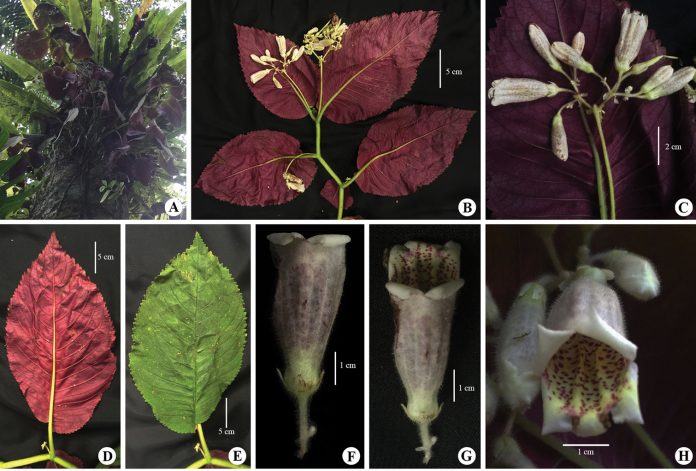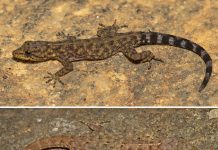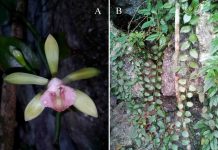During the recent botanical surveys (2018 – 2019) of Pu Hoat Nature Reserve in Nghe An Province, Vietnam, researchers collected an unknown species of Loxostigma. These specimens were different from the other known Loxostigma species and presented the unknown taxon and morphologically most similar to L. dongxingensis and L. damingshanensis in the plant habit. This new species is Loxostigma puhoatense, described and illustrated from Pu Hoat Nature Reserve.
The genus Loxostigma is in the family Gesneriaceae, with at least 11 species recognized including one species from Didymocarpus and three species of the former Briggsia based on molecular and morphological evidence. It is distributed mainly in Southern and Southeastern Asia, and most of the species have restricted distributions in southwestern China. There are four currently known species of the genus in Vietnam, namely Loxostigma dongxingensis, L. fimbrisepalum, L. glabrifolium & L. griffithii. The specific epithet “puhoatense” is derived from the type locality. Xuyến thư pù hoạt (Vietnamese language) is the vernacular name of this plant.
Loxostigma puhoatense is an epiphyte, evergreen, perennial herbs with rhizomes and growing on the surface of Ficus sp. (Moracaeae), and is associated with fern (e.g. Asplenium nidus L. (Aspleniaceae), epiphytic herbs and Pothos chinensis. Flowering in October–December and fruiting November–February.
This new species shape of leaf blades, somewhat pubescent stem, narrowly ovate calyx with margin entire, pistil and the shape of flower is same as other similar species. Nevertheless, abaxially reddish-purple leaf blade with pubescent along veins reasons to differs from both similar species. Identified those significant differences in its floral and vegetative structures conduce to described a new species to science. Scientists conducted a critical examination of the specimens, and made a comparison with type material and protologues of presumed closely related species in Vietnam and neighboring countries.
In this species, Stem is simple, borne from a node of the rhizome, shallow angular at the middle internodes, terete toward both ends. Rhizome internodes up to 20 cm long, 3.5–4 mm in diam. Leaves are opposite, spread along stem, unequal in a pair; petiole cylindrical, adaxially sunken, and greenish to purplish, abaxially rounded and greenish. Calyx is 5-sect from the base, segments equal, whitish, narrowly ovate. It has linear, 2–2.5 mm long, brown color, with appendages on both ends of the seeds. Style is linear, pale greenish, sparsely glandular-puberulent. There are 2 stigmas, which are equal, 2-lipped, undivided. Capsule is 6–6.5 cm long, 2–3mm in diam., straight, not twisted and glabrous.
All measurements and description of the new species are based on living flowering material and herbarium specimens collected from the type locality, supplemented with type material from the herbaria as well as digitized specimen images of Loxostigma species available on the web from Muséum National d’Histoire Naturelle, Chinese Virtual Herbarium and Jstor Global Plant. Although, more data is needed to determine conservation status of this new species.
If you are interested to read more on this research, you can find the full research article in here DOI: 10.3897/phytokeys.151.49473




























